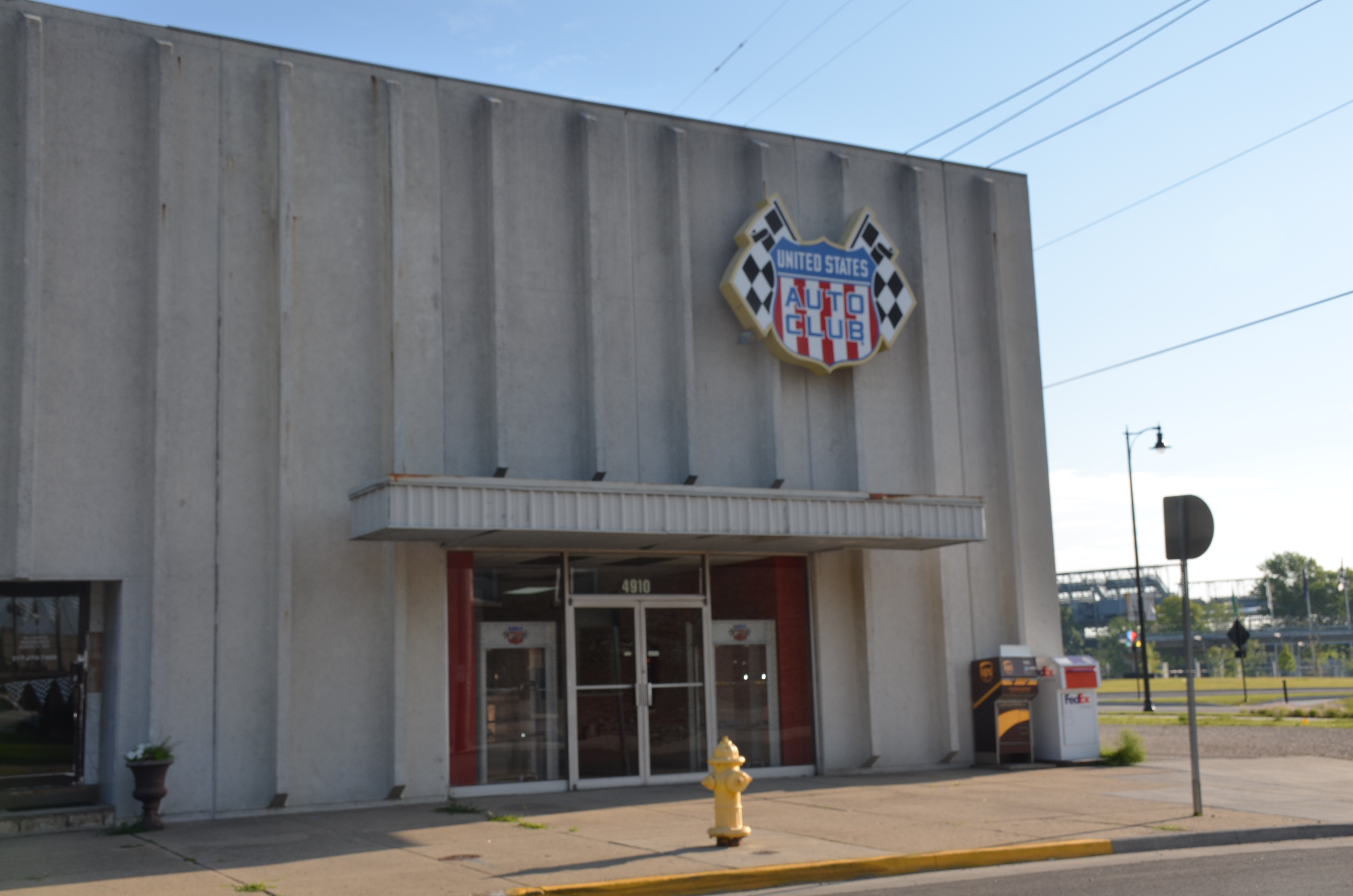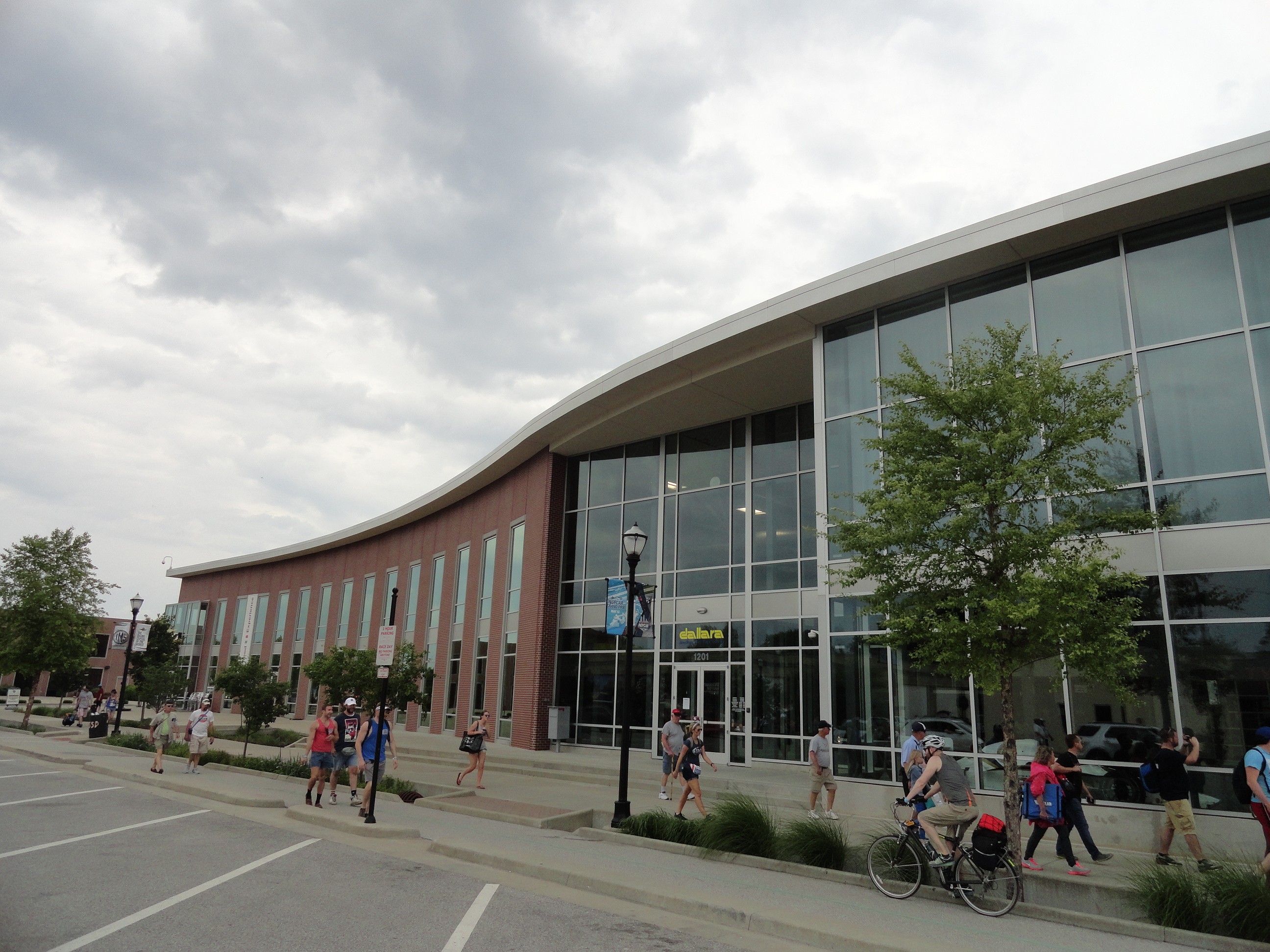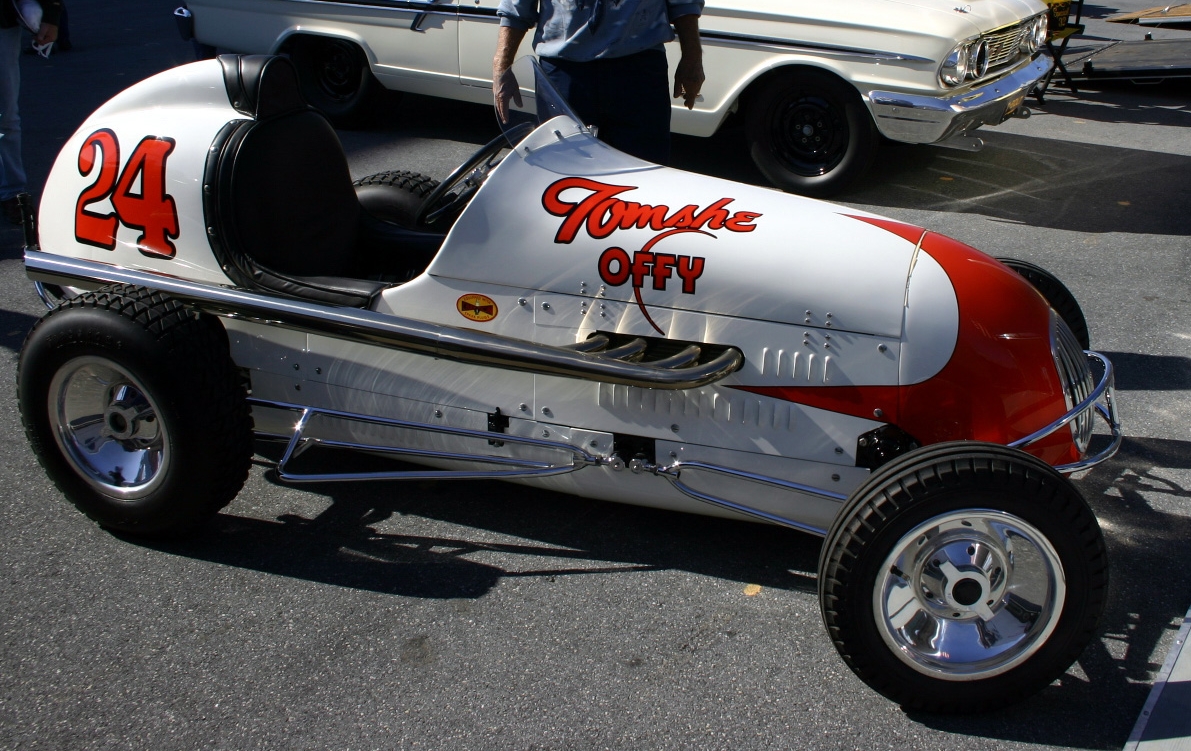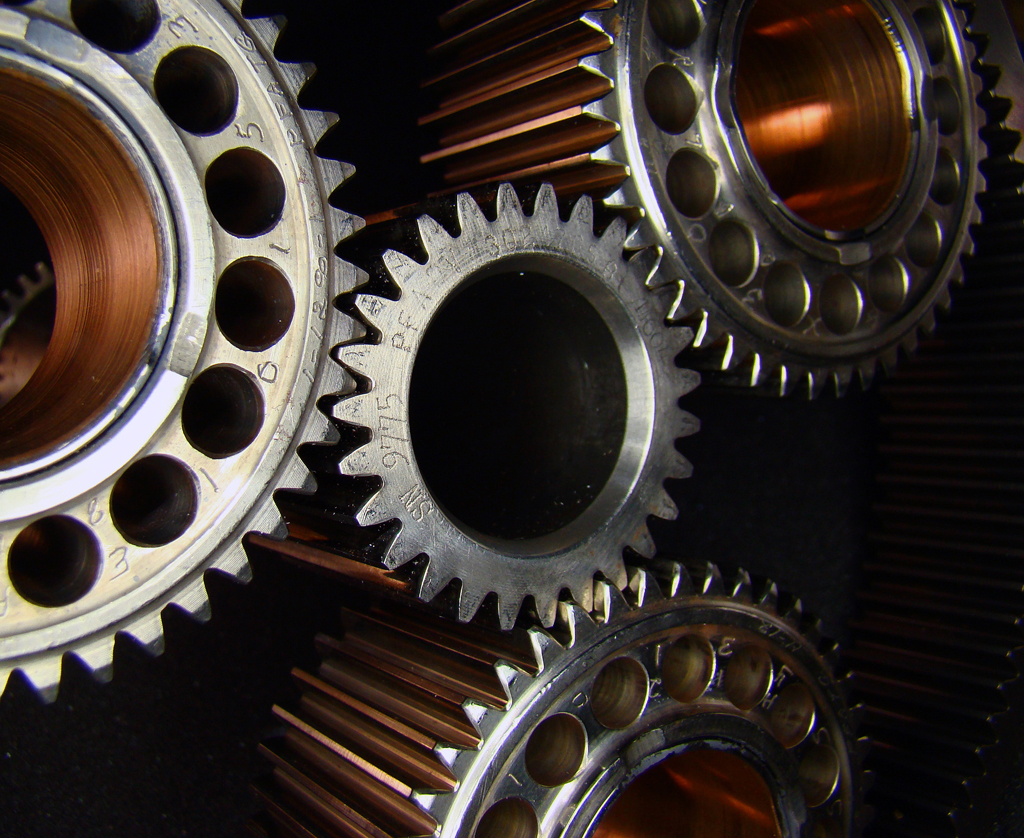|
1968 Indianapolis 500
The 52nd International 500 Mile Sweepstakes was held at the Indianapolis Motor Speedway in Speedway, Indiana on Thursday May 30, 1968. For the second year in a row, one of Andy Granatelli's STP Turbine-powered machines was leading late in the race, but once again, it failed within sight of victory. On lap 174, Lloyd Ruby's engine misfired allowing Joe Leonard to take the lead in the Lotus 56 Turbine. Leonard, however, suffered a flameout on the lap 191 restart, and rolled to a silent and shocking halt. Bobby Unser in the venerable piston-powered Offenhauser, inherited the lead, and despite gear linkage trouble, won the first of his three Indy 500 victories (1968, 1975, 1981). This was the final Indianapolis 500 to feature a front-engined car in the starting field. Of the 33 cars, 32 were rear-engined machines (including three turbines). Jim Hurtubise's entry, which dropped out after only nine laps, was the last front-engine car to race in the 500. This was also the first 500 wo ... [...More Info...] [...Related Items...] OR: [Wikipedia] [Google] [Baidu] |
United States Auto Club
The United States Auto Club (USAC) is one of the sanctioning bodies of auto racing in the United States. From 1956 to 1979, USAC sanctioned the List of USAC Championship Car seasons, United States National Championship, and from 1956 to 1997 the organization sanctioned the Indianapolis 500. Today, USAC serves as the sport governing body, sanctioning body for a number of racing series, including the Silver Crown Series, National Sprint Cars, National Midgets, Speed2 Midget Series, .25 Midget Series, Stadium Super Trucks, and Pirelli World Challenge. Seven-time USAC champion Levi Jones (racing driver), Levi Jones is USAC's Competition Director. History When the American Automobile Association (AAA) withdrew from auto racing after the 1955 season, citing the 1955 Le Mans disaster, Le Mans disaster and the death of Bill Vukovich at 1955 Indianapolis 500, Indianapolis as contributing factors, both the Sports Car Club of America, SCCA and NASCAR were mentioned as its potential success ... [...More Info...] [...Related Items...] OR: [Wikipedia] [Google] [Baidu] |
Speedway, Indiana
Speedway is a town in Wayne Township, Marion County, Indiana, United States. The population was 11,812 at the 2010 U.S. Census. Speedway, which is an enclave of Indianapolis, is the home of the Indianapolis Motor Speedway. History Speedway was laid out in 1912 as a residential suburb. It took its name from the Indianapolis Motor Speedway. It is an early example of a residential community planned for the industrial plants located nearby. Carl G. Fisher, James A. Allison, Frank Wheeler, and Arthur Newby, founders of the Indianapolis Motor Speedway, planned the suburb of Speedway west of the track. Fisher and Allison owned plants that needed workers, the Prest-O-Lite factory and Allison Engine Company. The investors' goal was to create a city without horses, where residents would drive automobiles, as well as participate in creating mechanical parts for new modes of transportation. The Speedway Historic District was listed on the National Register of Historic Places in 2005. Geo ... [...More Info...] [...Related Items...] OR: [Wikipedia] [Google] [Baidu] |
Front-engine, Rear-wheel-drive Layout
In automotive design, a FR, or front-engine, rear-wheel-drive layout is one where the engine is located at the front of the vehicle and driven wheels are located at the rear via a drive shaft. This was the traditional automobile layout for most of the 20th century. Modern designs commonly use the front-engine, front-wheel-drive layout (FF). It is also used in high-floor buses and school buses. Front mid-engine, rear-wheel-drive layout In automotive design, a front mid-engine, rear-wheel-drive layout (FMR) is one that places the engine in the front, with the rear wheels of vehicle being driven. In contrast to the front-engine, rear-wheel-drive layout (FR), the engine is pushed back far enough that its center of mass is to the rear of the front axle. This aids in weight distribution and reduces the moment of inertia, improving the vehicle's handling. The mechanical layout of an FMR is substantially the same as an FR car. Some models of the same vehicle can be classified as ... [...More Info...] [...Related Items...] OR: [Wikipedia] [Google] [Baidu] |
1981 Indianapolis 500
The 65th Indianapolis 500 was held at the Indianapolis Motor Speedway in Speedway, Indiana on Sunday, May 24, 1981. The race is widely considered one of the most controversial races in Indy history. Bobby Unser took the checkered flag as the winner, with Mario Andretti finishing second. After the conclusion of the race, USAC officials ruled that Unser had passed cars illegally while exiting the pit area during a caution on lap 149 (of 200). Unser was subsequently issued a one-position penalty. The next morning, the official race results were posted, and Unser was dropped to second place. Mario Andretti was elevated to first place and declared the race winner. A firestorm of controversy followed the ruling. After a lengthy protest and appeals process, the penalty was rescinded, and Unser was reinstated the victory on October 9. Officially, it became Unser's third-career Indy 500 victory and his final win in Indy car competition. Unser stepped out of the car at the end of the s ... [...More Info...] [...Related Items...] OR: [Wikipedia] [Google] [Baidu] |
1975 Indianapolis 500
The 59th 500 Mile International Sweepstakes was held at the Indianapolis Motor Speedway in Speedway, Indiana on Sunday, May 25, 1975. A. J. Foyt started on the pole position and Bobby Unser won his second Indianapolis 500. Dan Gurney, one of the founders of All American Racers, who finished second as a driver himself in 1968–1969, won his first and only Indy 500 as a car owner. Gurney's Eagle chassis itself scored its third "500" win. The race was part of the 1975 USAC National Championship Trail. On the 174th lap (435 miles), a heavy downpour pelted the Speedway, and officials immediately ended the race, just 26 laps short of the scheduled distance. Bobby Unser was leading the race at the red flag, and was declared the winner. Defending champion Johnny Rutherford was in second place, and pole-sitter A. J. Foyt came home third. Tom Sneva survived a spectacular crash in turn two on lap 125. His car touched wheels with the car of Eldon Rasmussen, and flipped into the catch fen ... [...More Info...] [...Related Items...] OR: [Wikipedia] [Google] [Baidu] |
Transmission (mechanics)
Propulsion transmission is the mode of transmitting and controlling propulsion power of a machine. The term ''transmission'' properly refers to the whole drivetrain, including clutch, gearbox, prop shaft (for rear-wheel drive vehicles), differential, and final drive shafts. In the United States the term is sometimes used in casual speech to refer more specifically to the gearbox alone, and detailed usage differs. The transmission reduces the higher engine speed to the slower wheel speed, increasing torque in the process. Transmissions are also used on pedal bicycles, fixed machines, and where different rotational speeds and torques are adapted. Often, a transmission has multiple gear ratios (or simply "gears") with the ability to switch between them as the speed varies. This switching may be done manually (by the operator) or automatically (by a control unit). Directional (forward and reverse) control may also be provided. Single-ratio transmissions also exist, which simply cha ... [...More Info...] [...Related Items...] OR: [Wikipedia] [Google] [Baidu] |
Offenhauser
The Offenhauser Racing Engine, or Offy, is a racing engine design that dominated American open wheel racing for more than 50 years and is still popular among vintage sprint and midget car racers. History The Offenhauser engine, familiarly known as the "Offy", was an overhead cam monoblock 4-stroke internal combustion engine developed by Fred Offenhauser and Harry Arminius Miller. Originally, it was sold as a marine engine. In 1930 a four-cylinder Miller engine installed in a race car set a new international land speed record of . Miller developed this engine into a twin overhead cam, four-cylinder, four-valve-per-cylinder racing engine. Variations of this design were used in midgets and sprints into the 1960s, with a choice of carburetion or Hilborn fuel injection. When both Miller and the company to whom he had sold much of the equipment and rights went bankrupt in 1933, Offenhauser opened a shop a block away and bought rights to engines, special tooling and drawings ... [...More Info...] [...Related Items...] OR: [Wikipedia] [Google] [Baidu] |
Reciprocating Engine
A reciprocating engine, also often known as a piston engine, is typically a heat engine that uses one or more reciprocating pistons to convert high temperature and high pressure into a rotating motion. This article describes the common features of all types. The main types are: the internal combustion engine, used extensively in motor vehicles; the steam engine, the mainstay of the Industrial Revolution; and the Stirling engine for niche applications. Internal combustion engines are further classified in two ways: either a spark-ignition (SI) engine, where the spark plug initiates the combustion; or a compression-ignition (CI) engine, where the air within the cylinder is compressed, thus heating it, so that the heated air ignites fuel that is injected then or earlier.''Thermodynamics: An Engineering Approach'' by Yunus A. Cengal and Michael A. Boles Common features in all types There may be one or more pistons. Each piston is inside a cylinder, into which a gas is intr ... [...More Info...] [...Related Items...] OR: [Wikipedia] [Google] [Baidu] |
Flameout
In aviation, a flameout (or flame-out) is the run-down of a jet engine or other turbine engine due to the extinction of the flame in its combustor. The loss of flame can have a variety of causes, such as fuel starvation, excessive altitude, compressor stall, foreign object damage deriving from birds, hail, or volcanic ash, severe precipitation, mechanical failure, or very low ambient temperatures. Engine control Early jet engines were prone to flameout following disturbances of inlet airflow, or sudden or inappropriate thrust lever movements, which resulted in incorrect air-fuel ratios in the combustion chamber. Modern engines are much more robust in this respect, and are often digitally controlled, which allows for a significantly more effective control of all engine parameters to prevent flameouts and even initiate an automatic restart if a flameout occurs. Flameouts occur most frequently at intermediate or low power settings such as in cruise and descent. To prevent a flam ... [...More Info...] [...Related Items...] OR: [Wikipedia] [Google] [Baidu] |
Pratt & Whitney Canada PT6
The Pratt & Whitney Canada PT6 is a turboprop aircraft engine produced by Pratt & Whitney Canada. Its design was started in 1958, it first ran in February 1960, first flew on 30 May 1961, entered service in 1964 and has been continuously updated since. It consists of two basic sections: a gas generator with accessory gearbox and a free power turbine with reduction gearbox, and is often seemingly mounted backwards in an aircraft in so far as the intake is at the rear and the exhaust at the front. Many variants of the PT6 have been produced, not only as turboprops but also as turboshaft engines for helicopters, land vehicles, hovercraft, and boats; as auxiliary power units; and for industrial uses. By November 2015, 51,000 had been produced, had logged 400 million flight hours from 1963 to 2016. It is known for its reliability with an in-flight shutdown rate of 1 per 651,126 hours in 2016. The PT6A covers the power range between while the PT6B/C are turboshaft variants for he ... [...More Info...] [...Related Items...] OR: [Wikipedia] [Google] [Baidu] |
Lloyd Ruby
Lloyd Ruby (January 12, 1928 – March 23, 2009) was an American racecar driver who raced in the USAC Championship Car series for 20 years, achieving 7 victories and 88 top-ten finishes. He also had success in endurance racing, winning the 24 Hours of Daytona (twice), the 1966 12 Hours of Sebring and the 1966 World Sportscar Championship. Racing career Ruby raced in the USAC Championship Car series in the 1958–1977 seasons, with 177 career starts, including the Indianapolis 500 from 1960 to 1977. He achieved 88 top-ten finishes, and seven victories. His best finish at Indy was third, in 1964. In 1966, he led the Indy 500 for 68 laps. Ruby also had two endurance racing victories in the 24 Hours of Daytona (1965–1966), both times partnering with Ken Miles. Ruby and Miles teamed up to win the 1966 12 Hours of Sebring and the 1966 World Sportscar Championship. Ruby was scheduled to drive in the 1966 24 Hours of Le Mans, however he was forced to withdraw due to spinal injuries suf ... [...More Info...] [...Related Items...] OR: [Wikipedia] [Google] [Baidu] |
Lotus 56
The Lotus 56 was a gas turbine-powered four-wheel-driven racing car, designed by Maurice Philippe as Team Lotus's STP-backed entry in the 1968 Indianapolis 500. All three cars entered retired from the race, Joe Leonard's car expiring while leading just eight laps from the finish. A variant designated the Lotus 56B was entered in three races in the 1971 Formula One season but with little success. The 4WD concept was also used in the 1969 Lotus 63 F1 car, and the wedge shape became a prominent feature of the world championships winning Lotus 72. Indianapolis 500 The Lotus 56 used a modified version of the ST6 gas turbine used on the STP-Paxton Turbocar ("Silent Sam") that almost won in 1967. But the car itself was an entirely new and more advanced design which introduced a distinctive aerodynamic wedge-shaped body rather than a cigar-shape. USAC, the governing body of the Indy 500, had implemented new rules aimed at handicapping turbine powered racing cars by drastically ... [...More Info...] [...Related Items...] OR: [Wikipedia] [Google] [Baidu] |








